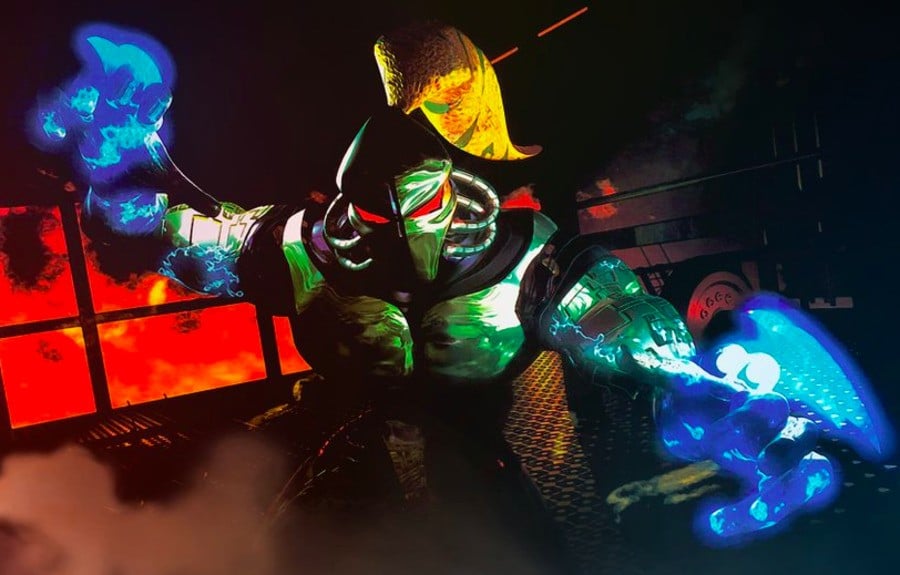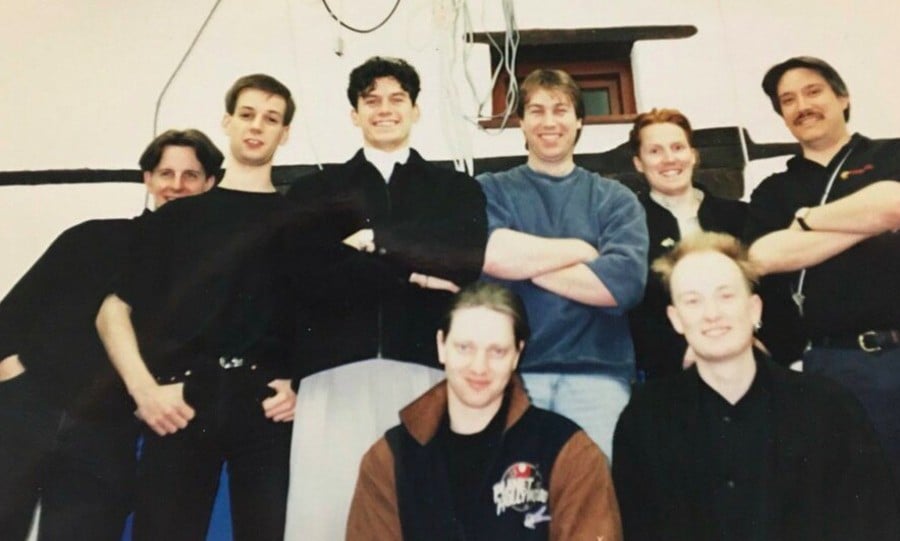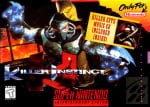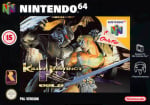
The technological sands may have been shifting dramatically back in 1994, but the ripples from the groundbreaking impact of Capcom’s Street Fighter II were still being felt in the games industry. While the 32-bit era was looming and sophisticated new games machines were introducing players to the immersive thrills of 3D worlds, the humble 2D one-on-one fighter was still a big draw in both arcades and at home – so when Nintendo announced that it was producing its own take on the genre via the Rare-made Killer Instinct, it understandably caught the attention of the entire industry.
Killer Instinct was a landmark release not just for the notoriously family-friendly Nintendo, but also for Rare – the UK company that, in the early '90s, Nintendo bought a 25 percent stake in (this would eventually rise to 49 percent before the entire company was purchased by Microsoft for $375 million in September 2002). Back in 1994, Rare was a relatively compact outfit which operated out of a quaint farm complex in the middle of the sleepy English countryside – a million miles away from the grim battlegrounds portrayed in its iconic one-on-one brawler.
According to Killer Instinct co-designer Ken Lobb, the seeds of the game's unique combat system came from his love of SNK's Neo Geo, an arcade and home console platform that was flooded with one-on-one fighters. "I was very enamoured, early on, with the Neo Geo," he tells Hold Back To Block. Inspired by World Heroes and Fatal Fury 2, he conceptualised his own 'dream' fighting game packed with fancy multi-hit combos. Dragon, from World Heroes, was the inspiration for Killer Instinct's 'auto-doubles', while Fatal Fury's Kim Kaphwan's 12-hit special move foreshadowed the incredible 'Ultra Combos' in Killer Instinct.
"This is the beginnings of Killer Instinct," says Lobb. "The Dragon character and Kim Kaphwan doing that move, [this] started me thinking about the idea [that] you should be able to do longer combos in a fight. What I didn't like about any game where you were getting hit more than three or four times was [that], as a player, I felt like, 'you're hitting me, I'm gonna watch, gee thanks.' That's where the Combo Breaker came from."
All of this foundational thinking came during Lobb's time at Namco. He conceived a weapons-based brawler under the codename 'Melee' alongside former Capcom staffer James Goddard, but he left to join Nintendo before any more work took place, and Goddard – with fellow ex-Capcom employee Dave Winstead – would go on to create 1995's SNES and Mega Drive fighter Weaponlord. However, Lobb kept that idea in the back of his head. One of his early tasks at Nintendo was to aid Rare with the development of Donkey Kong Country and help decide the level of investment required on Nintendo's part to produce it. Nintendo baulked at the cost initially, leading to the suggestion that perhaps Rare could produce more than just one game.
"So, I go to Rare, knowing that I'm going to give them everything they need to do Donkey Kong," Lobb continues. "We'd already signed – but that maybe there are more games. So, they sit me down in a room with three of them, and they're like, 'here's the second game we'd like to do.' And, funnily enough, the name was 'Brute Force'." Rare's artists had come up with a cast of CGI-rendered fighters, but, as Lobb explains, the game "wasn't Street Fighter, and it wasn't Killer Instinct," so he offered up his ideas about combo breakers, auto-doubles and everything else. This clearly had the desired impact, as Tim and Chris Stamper – the bosses of Rare – later contacted Nintendo of America stating they wanted to proceed with Lobb's pitch. With their approval gained, Lobb relocated to the UK to work alongside Rare's Chris Tilston and Mark Betteridge on what was now known as Killer Instinct.

Announced alongside the aforementioned Donkey Kong Country and the highly divisive Cruis'n USA, the game was part of a Nintendo-funded technological offensive designed to keep Sega, Sony, Atari and 3DO at bay. Rare’s far-sighted investment in expensive Silicon Graphics systems resulted in some of the first truly convincing CGI visuals to be seen in a video game; while the SNES-based Donkey Kong Country would arguably extend the lifespan of its host console by a few years, the powerful coin-op Killer Instinct was destined for the upcoming Ultra 64 home system, previously known as Project Reality. The thunder of Nintendo’s rivals had been well and truly stolen.
A lot was riding on these games, with Killer Instinct, in particular, being a point of intense interest for the games media. This was, Nintendo promised, a solid indication of what the Ultra 64 (which, of course, would later become known as the Nintendo 64) was capable of; the arcade unit’s splash screen even dangled the carrot that it would be “available for your home in 1995, only on Nintendo Ultra 64.” In reality, Killer Instinct was running on largely bespoke hardware which had precious little in common with the N64 system, but it was a marketing beat that worked.
"Rare managed to persuade Nintendo that it should make a game which represented the N64's power, but which did not run on the actual, final N64 hardware," says Martin Hollis, who served as a programmer on the game. "The problem with new platforms is that first, you need the hardware, then you can produce the software; this obviously means a huge delay in getting to market. Nintendo had some incentive to put the cart before the horse, you could argue; it wanted to show off its powerful new home system sooner rather than later. Also Rare had a history of developing amazing coin-op hardware, and there was a team at Rare with an interest in making a fighting game. All of these factors made Killer Instinct a reality."








